This is the fourth in a series of articles that attempts to disclose some of the known issues playing behind the scenes in the Calico Complex and beyond…
MASSACRE LAKES HERD MANAGEMENT AREA
I first jumped into the issues surrounding the Massacre Lakes Herd Management Area (HMA) due to a BLM Scoping Notice issued on May 18, 2007, to remove wild horses from the Wall Canyon East, Nut Mountain, Massacre Lakes and Bitner HMA’s.
Turns out, the Massacre Lakes HMA is one of the few areas left that BLM hasn’t “officially” set an AML for wild horses. By that I mean, they DO have an AML, but it wasn’t set as a result of any official monitoring, environmental assessments or multiple use decisions.
It was plunked down in the middle of an allotment management plan in 1982 as a “starting point” – no actually forage via AUMs were issued for wild horses at this time but there were lots of promises of monitoring to determine “appropriateness”. This AML was recently re-approved with a slight increase through the BLMs Surprise Field Office’s new Resource Management Plan (RMP) with more promises of monitoring in the future.
Well, after several false starts, postponements, and “we'll get back to you”, the future has arrived and BLM has released a Rangeland Health Assessment (RHA) and Monitoring Evaluation Report (MER), which determined adjustments need to be made to wild horse AMLs and livestock authorizations.
If you are wondering why Massacre Lakes HMA is now being included in posts about the Calico Complex, the Sheldon National Wildlife Refuge and yes, more information that is coming about the Ruby Pipeline and Tri-State Mega-Complex, it's because it sits smack dab in the middle of all this action….
According to the Final Environmental Impact Statement (FEIS) for the Ruby Pipeline, Table 4.5.7-1, five HMAs will be directly affected by the proposed route: Black Rock Range West, Warm Springs Canyon, Wall Canyon, Nut Mountain, and Massacre Lakes HMAs totaling 298,000 acres of wild horse and burro habitat. The Massacre Lakes and Bitner HMAs are at the top and to the left of Sheldon.

However, BLM is not too concerned with Ruby’s impacts to the Massacre Lakes wild horses as they claim the proposed route will only cross the south end of the HMA were wild horses don’t generally go.
THE ISSUES
About Acreage
In BLMs National Herd Statistics for Fiscal Year 2004, the Massacre Lakes Herd Area actually encompassed a single Herd Area totaling 115,937 acres of BLM managed lands and 11,791 acres of “Other” managed lands for a total of 127,728 acres.
Then, BLM decided to create artificial boundaries by separating the area into two Herd Management Areas, the Massacre Lakes and Bitner HMAs. During this process, a total of 34,166 acres were removed from wild horse use.
Cross-referencing records from BLMs FY04 and FY07 Herd Statistics, the original Herd Area also saw a “magical disappearance” of 17,125 acres in 2007 from their original HA records posted in 2004.
Furthermore, according to the April 2010, Rangeland Health Assessment (RHA) and Monitoring Evaluation Report (MER), wild horses are generally only found in the Juniper Pasture, which totals 7,653 acres. (This leads me to ponder, is it possible BLM has so manipulated the original Herd Area acreage of 127k acres over the years that merely 7,600 acres is all that is actually left that wild horses can still use and/or are still allowed on?)
About Populations
The Massacre Lakes wild horses haven’t been removed since 1988. The recent BLM Monitoring Evaluation Report (MER) states;
“Excess wild horses were gathered from the Massacre Lakes HMA in 1984 and 1988. In 1988, 25 wild horses were gathered and 11 head (3 studs and 8 mares) were released back into the HMA. Since 1988 Massacre Lakes HMA has had four helicopter population inventories (direct counts) completed. The 1997 population inventory showed 27 wild horses in the HMA. In 2001 the population inventory showed 54 wild horses in the HMA. Between 1997 and 2001 the average herd growth rate was between 18 and 20%. The September 2007 population inventory showed 110 wild horses in the HMA. Between 2001 and 2007 the average herd growth rate was between 12 and 13%. In March 2008 (before foaling season) another population inventory showed 108 wild horses in the HMA. The current population estimate for 2009 is between 136 and 202 wild horses.”
Yes, the BLM notes that in the four years between 1997 and 2001, wild horse growth rates were 18-20%, when populations doubled from 27 to 54. Then, the next six years indicated a 12-13% average growth rate. Yet despite their own published reproduction rates, the 2008 population census of 108 wild horses is now estimated at up to 202 wild horses, as populations are projected as potentially doubling in merely two years – though BLM has absolutely no records of this ever occurring here before….
BLM issued a decision in the RMP to manage the Massacre Lakes with additional HMAs as a “Complex”, which includes: Bitner HMA(AML-25), Nut Mountain HMA (AML-55) and Wall Canyon HMA (AML-25). Here is the reasoning used to support “Complex Management” of these HMAs, which established the following legal management plan for the life of the RMP (10-30 years):
“HMAs would be managed individually in four of the eight herd management areas; however, the Nut Mountain, Bitner, Massacre Lakes, and Wall Canyon HMAs would be managed as a complex. This would facilitate recovery of degraded or threatened ecosystem components by providing sufficient management flexibility to (temporarily) remove horses from an entire HMA (or portion thereof) in order to permit recovery following wildfire, resource improvement projects, or overgrazing by horses. Grazing rest would allow rapid and dramatic improvements in land health. Once the area recovers, an appropriate AML would be determined and wild horses reintroduced.” (Section 2.21 Wild Horses, pg. 2-82)
About Livestock
Here's what BLM had to say about livestock grazing in the development of the Surprise RMP approved in 2008.
> On total livestock authorizations:
“Livestock grazing on lands administered by the BLM Surprise Field Office (SFO) includes 49 grazing allotments within 1,445,443 total acres. The SFO authorizes 89,618 cattle, 2,671 sheep, and 176 horse AUMs annually on 59 permits issued to 51 permittees. Average annual use for the 10-year period between 1994 and 2003 was approximately 64,550 AUMs.” (Pg. 2-34)
> On adverse effects:
“The analysis considered effects on livestock grazing adverse if they would do any of the following: 1) reduce the area authorized for livestock grazing, 2) restrict the amount of forage (AUMs) available for livestock grazing, or 3) create higher costs to livestock operators using public land grazing permits”. (Pg. 4-46)
> On wild horses and livestock:
“Wild horses can affect livestock grazing both directly and indirectly. Grazing by horses directly reduces the amount of forage and water available for livestock…. Wild horse grazing, even at AML, would continue to result in moderate direct and indirect adverse impacts to livestock grazing in the planning area”. (Pg. 4-46)
What BLM has to say about livestock in the April, 2010, Monitoring Evaluation Report (MER):
>Authorized use for the Massacre Allotment is 3,215 AUMs for up to 582 cattle grazing five months out of the year on an even-odd pasture rotation schedule.
>“From 1988 to 2009 cattle actual use averaged 64% of the 3,215 permitted AUMs.”

While BLM cites a 64% average for actual cattle use, according to the Animal Unit Month (AUM) Chart provided in the MER above, livestock grazing was authorized at an all time high in 2008 and the third highest in 2009 since 1988 – right at the time BLM needed to snap lots of photos of rangeland degradation, which of course is now being attributed mostly to wild horses…
About The Juniper Pasture
“Based on population inventory and distribution information, wild horses mainly occupy the mid and upper elevations of the Juniper Pasture and rarely use other pastures except during unusual winters when the snow is too deep for them to find forage.”
"Figure 2 (below) depicts annual livestock AUMs used in the Juniper Pasture based on Actual Grazing Use Reports since 1988 and estimated wild horse use (AUMs) based on helicopter population inventories (direct counts) in 1997, 2001, 2007, and 2008. During 1989, 1992, 1994, 1996, 1998, 2000, 2003, 2004, 2006, and 2007 the Juniper Pasture was rested from cattle use."

Again, we find that since 1988, the highest recorded livestock grazing occurring in the Juniper Pasture was authorized by BLM in 2008 during “drought, low precipitation, lack of forage production and degraded rangeland conditions” that are resulting from this lack of water – unless you need to graze livestock heavily to support a new rangeland health assessment that will determine new wild horse AMLs.
Question: If BLM states that the Juniper Pasture is authorized for an even-odd pasture rotation system, meaning, Year 1 - Cattle graze, Year 2 - the Pasture is rested (BLM April 2010 MER, pg. 5) and the Juniper Pasture was rested in 2007, then cattle were allowed to graze in 2008, why does the chart above show approximately 1,200 AUMs being used by cattle in 2009?
BLM also states in the accompanying RHA about the Juniper Pasture that, “In 2009, the wild horse estimated actual use was greater than the livestock actual use within this pasture”.
Hmmm… actual use, huh?
About Rangeland Health
In the April 2010, RHA and MER, BLM states,
> “Field observations indicate that wild horses are currently contributing the most negative impacts to riparian sites within the Allotment/HMA, especially those in the vicinity of Sage Hen Springs. Based on staff observations, wild horses appear to be the sole contributor to the degraded conditions and non-functional status of Sage Hen Springs”.
> “The poor condition of riparian areas in the northeast portion of the Juniper Pasture are generally due to year-round use by wild horses rather than seasonal use by livestock.”
> “In the northern most portions of the allotment, negative impacts to Sage Hen Spring and smaller un-named springs in the vicinity are reducing the water holding capacity for riparian habitats. The degraded conditions of riparian areas in the northeast portion of the Juniper Pasture are generally due to year-round use by wild horses rather than seasonal use by livestock.”
> “Sustainable forage utilization levels (that consider the combined impacts of livestock, wild horses, and wildlife) will be set for key grass, forb, and shrub species in order to maintain healthy native plant communities”. (Surprise RMP, Final EIS, pg. 2-64)
> “Forage allocation for wild horses would be managed equitably (i.e., neither having precedence over the other).” To learn more about additional stipulations for wild horse and burro management affecting the Massacre Lakes HMA , Click Here.
About Water
> “Several of the natural water sources have been developed and some of these developed waters have been fenced” (MER, pg. 6.)
> BLM only monitored 12 springs occurring in the Massacre Lakes Allotment/HMA, all of which occur in the Juniper Pasture. Of these, only one is listed by BLM as used by livestock, Post Canyon Seep #2 – despite authorizing up to 582 head of cattle 5 months out of the year. The rest of the “noted impacts” to 7 of these water sources is attributed solely to wild horses in a Riparian Table provided in the RHA (pg. 7), including Un-named Seep # 4.
> In the detailed descriptions of Seep #4, BLM states livestock were found using the riparian site. This fact was omitted when they were filling out the boxes in the Riparian Table attributing use exclusively to wild horses.
> Though other water sources are listed for the Lake Field, West Seeding, East Seeding and Sand Spring Pasture, all of them are cited as not containing any “public springs or springs” with the exception of Sand Spring Pasture, which has been developed. (MER, pg. 6.)
> The BLM provides no water flow rates or gallons per minutes within either assessment in order to help determine water availability for wild horse use. One would think this information would be considered a critical issue in the drought stricken West as it is the harbinger of “emergency round ups” and yet this information is totally absent in the RHA.
> BLM also excuses itself for failing to provide any water quality data throughout both the RHA and MER by checking of N/A on all of the required questions.
“Extensive experience monitoring livestock impacts from cattle to surface water quality has shown that livestock, especially cattle, must be excluded from surface waters if fecal coliform standards are to be met…..The BLM relies primarily on the Water Quality Control Board to identify impaired waters or high probability of impaired waters (page A-36). However, if BLM is sampling these waters and Lahontan staff does not receive the data, how is Lahontan staff to determine if waters are impaired or not? There clearly needs to be a formal process for sharing of monitoring data.”
Lahontan Regional Water Quality Board
Public Comment/Surprise RMP Planning Process
Public Comment/Surprise RMP Planning Process
> Post Spring, Indian Spring and Sage Hen Spring appear to be the major water sources for wild horses, two of which have been fenced. In 2007, BLM noted that the exclosure fence for Post Spring was down and received heavy grazing use by wild horses. The fence was fixed in 2008 to exclude wild horses again.
> The Sage Hen Spring appears to be the only unfenced spring in the area and as can be expected, is receiving a high degree of wild horse use. Four other un-named seeps were also included in the evaluation, all of which are located between ½ to 1 mile from Sage Hen Spring. Of these, BLM noted “impacts were generally from wild horses” on three of them while the fourth found evidence of wild horses, cattle and antelope “but trampling impacts were not noted” within the one Un-Named Seep cattle were found using.
> A total of 2,590 acres of lakes have been identified as occurring in the area, some of which overlaps the Massacre Lakes HMA. However, the map provided by BLM indicates fencing has probably been erected to prevent any access by wild horses to this abundant water source. This is further evidenced by the fact that BLM reports no wild horse populations are found in these areas.

Overlay of BLM Maps of Water Sources and 2008 Wild Horse Populations
Blue dots are water sources, purple are wild horse populations.
Blue dots are water sources, purple are wild horse populations.
About Soils
> In the Surprise RMP, BLM sets the following standard for all future management plans for wild horses: “An AML will be reduced if soil degradation is attributable to wild horse use at the existing AML.” (pg. 2-44)
> In the April 2010, RHA, BLM states, “Results from soil stability tests indicated that three of the five sites were unstable”. BLM also checked off the box for Standards of Upland Soils Not Being Met and Not Progressing Towards meeting these standards; all three of these “unstable sites” are identified as occurring in the Juniper Pasture, exclusive home to the Massacre Lakes wild horses.
About Wildlife
> “The Massacre Lakes Allotment is entirely within NDOW’s Hunt Unit 011” (BLM April 2010, MER pg. 19)
> In the 1982 Revised Allotment Management Objectives, BLM approved forage allocations that, “Ensure sufficient browse for 90 deer” and “Provide habitat is satisfactory condition for 150 antelope”. “
> BLM went on to state, "The following allotment objectives [from the 1982 report] are no longer consistent with RMP objectives….BLM no longer manages for reasonable numbers of wildlife populations. The RMP replaced reasonable numbers with habitat condition”. (BLM April 2010 MER, pg. 28)
> “According to NDOW‘s 2008-2009 big game status report, estimates of mule deer populations for 2008 and 2009 were 2,400 animals in units 011-013 for each year.” (BLM April 2010, MER pg. 19)
> “In 2008 and 2009, the pronghorn antelope population estimate for unit 011 ranged from 1,100 to 1,200 animals.” (BLMs April 2010, MER, pg. 19.)
> “Nevada’s statewide pronghorn population remains at a record high level of 24,500 animals.” (Nevada Department of Wildlife [NDOW] 2009-2009 Big Game Status Book, pg. SS-2)
> “Recruitment rates remained strong n hunt Units 011 and 015….Buck ratios remain strong in hunt Units 011…However, the higher buck ratios observed in these hunt units are somewhat inflated by the preceeding year’s strong recruitment values.” (Nevada Department of Wildlife [NDOW] 2009-2009 Big Game Status Book, pg. 27)
“Pronghorn populations in Units 011 and 015 continue to do well. Recruitment values have been very strong in both of these units for several years. The pronghorn populations in these units are expanding. Unit 011 was slightly drier this year than what has been observed in the recent past, however, habitat conditions were still markedly better than what was observed in the surrounding hunt units." (Nevada Department of Wildlife [NDOW] 2009-2009 Big Game Status Book, pg. 28)
> “Competition for food and water between pronghorn, feral horses, cattle and domestic sheep continues to be an issue in Western Nevada. The current drought conditions have only made things worse, especially during the warmer months as animals seek out the areas with better forage and concentrate close to water sources. Once again, numerous complaints were received from hunters who had observed feral horses chasing and harassing pronghorn near water sources. The competition between horses and pronghorn occurs in most units but appears to be especially high in Unit 012 where water sources are somewhat limited.” (Nevada Department of Wildlife [NDOW] 2009-2009 Big Game Status Book, pg. 27)
> “According to NDOW, big game animals are experiencing declines due to drought conditions (7 of the last 10 years) affects on vegetation, and competition with wild horses.” (BLMs April 2010, MER, pg. 10.)
As NDOW continues to cite numerous complaints of harassment by wild horses and drought conditions creating intense competition between rangeland users, wildlife populations continue to soar with strong recruitment rates, record pronghorn populations, and average mule deer populations now tallied at 800 deer p/hunt unit versus the old days when “reasonable numbers” were actually set by BLM to protect habitat for all rangeland users.
Based on these reports, mule deer populations have increased by almost 900% and pronghorn have increased by at least 733% in the Massacre Lakes Allotment – but BLM doesn’t consider these dramatic increases in the “thriving natural ecological balance” in the RHA and MER analysis. Why? Because they wrote themselves a “get out of jail free card” in the new Surprise RMP…
“Sportsman and hunters contribute over $200 million per year in excise taxes to help the State agencies develop habitat and improve the hunting and fishing opportunities for everyone. Coordinating the BLM and USFWS efforts to utilize these funds to improve habitat and wildlife populations must be a first priority of the Resource Management Plan.”
James L. Easton/Public Comment
Surprise RMP Planning Process
Surprise RMP Planning Process
About Nevada Department Of Wildlife (NDOW)
How does NDOW feel about “feral horses”? Well, it depends on who you ask and what kind of hot seat they may be sitting on at the time. Generally, NDOW’s stated position is, they are strong supporters of BLM keeping wild horses and burros within the established AMLs.
And then they go after the AMLs….
Here some are excerpts from NDOW’s comments to BLM during the development of the Surprise RMP about the management of wild horses (Editors Note: These comments were NOT site specific to the Massacre Lakes area but to the entire area managed by the Surprise Field Office.):
> “The Preferred Alternative must determine the Standard Operating Procedures that affect the determination of carrying capacities and allocation of forage to ungulates. Specie specific rangeland monitoring studies must be identified to deal with wild horses and pioneering elk. Without meaningful studies and fair evaluations, the resources will remain a political issue.”
> “Monitoring studies must distinguish ungulate use and impacts for proper adjustments. Failure to properly monitor utilization limits or Guidelines will result in arbitrary allocation of available forage. Studies will be required to adjust and manage for pioneering elk.”
> “Genetic viability and self-sustaining populations are requirements of the Act. In specific herd management areas where the appropriate management level cannot support a self-sustaining population the herd should be eliminated. In herd areas that do not have adequate water, cover and forage, these herds should be eliminated. Costs of artificially managing herds dependent on private landowners are an excessive cost to limited budgets for wild horse and burro management.”
> “Appropriate Management Levels on isolated herds that are below 120 adults are deemed below a genetic threshold. Recent studies show these herds cannot survive over the long term and should be considered for elimination in the new RMP.”
About Migration
According to BLMs objectives in 1985, they were suppose to “assess the amount of interchange between the Massacre Lakes wild horses and the surrounding HMA’s in the Surprise Resource Area and the Bitner Butte Herd of the Sheldon National Wildlife Refuge” (BLMs April 2010, MER, pg. 27.)
When one reviews BLMs population inventories and reports for the Massacre Lakes wild horses since 1988, populations seem relatively stable for many of those years (except recently). It is from these numbers that BLM determines reproduction rates and estimated forage consumption, all of which appear relatively stable with no large population swings.
Except, BLM has determined these wild horses will be managed as a “Complex”, though no evidence is presented in the RHA or MER that would even suggest wild horse numbers are fluctuating from interchanges and migratory patterns, does it?
BLM even states in their RMP objectives that, “Once the area recovers, an appropriate AML would be determined and wild horses reintroduced.” So why would wild horses need to be “reintroduced” if they are a migrating between these HMA’s or even Sheldon?
Not a single report, excerpt or mention is made in the April 2010, RHA or MER of wild horses migrating to anywhere or if any follow up whatsoever was ever completed regarding interchanges between BLM horses and Sheldon horses.
This raises some interesting questions, such as:
> What about BLM’s current assertions in their April 2010 RHA/MER that state wild horses generally aren’t found anywhere outside of the Juniper Pasture with the rest of the HMA and pastures only receiving occasional, incidental use?
> Did BLM know this all along and that’s why the “approved” of a management plan in the RMP that would allow them to wipe out a herd with promises of future “reintroductions”, knowing full well there was no interchange going on whatsoever?
> Is that why NDOW was arguing that if a herd was not issued a self-sustaining AML such as the 35 for Massacre Lakes, 24 for Bitner, 55 for Nut Mountain, and 25 for Wall Canyon, that those herds should be eliminated in the RMP? But wouldn’t such an straightforward plan as NDOW suggests cause protests, spark controversy, and violate BLM’s requirement to maintain wild horses and burros “where presently found” at the passage of the 1971 Act?
> Or can the answer be found in why BLM has not conducted an official round up of wild horses in the Massacre Lakes HMA since 1988? Have they known all along that wild horses moved on to Sheldon and were “disposed of” according to USFWS policy – no questions asked?
********************************************************************************
The BLM is now accepting public comments on the Massacre Lakes Allotment, which will determine the future of livestock grazing and wild horse populations in the Massacre Lakes Herd Management Area. BLM will use comments received from interested parties to identify issues for the recommended management action. Please provide detailed comments if identifying an alternative for consideration. A copy of the EA and related documents will be available when completed.
~Public Comment Deadline~
FRIDAY, MAY 7TH, 2010, 4:30 P.M. PST
Bureau of Land Management-Surprise Field Office
Attn: Steve Surian
PO Box 460, Cedarville, CA 96104
Fax: (530) 279-2171
Email: casrpubcom@blm.gov
ADDITIONAL LINKS
BLM DOCUMENTS
Capture Plan/EA CA-370-05-28
Wall Canyon East, Nut Mountain and Bitner HMAs
September 2005
FONSI/DR EA CA-370-05-28
2005
Notice of Proposed Action (NOPA)
May 18, 2007
Massacre Lakes Scoping Letter
May 17, 2009
Massacre Lakes Allotment & HMA
Monitoring Evaluation Report (MER)
April 26, 2010
Massacre Lakes Allotment & HMA
Rangeland Health Assessment (RHA)
April 7, 2010
My Public Comment Submissions
October 10, 2007
June 17, 2009
Nevada Department of Wildlife
Big Game Status Report: 2008-2009

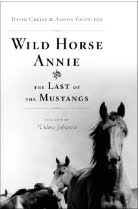



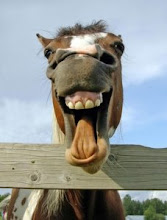




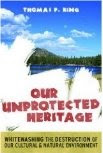



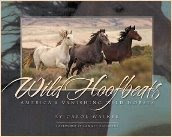




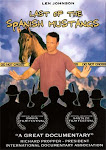





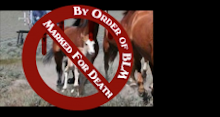
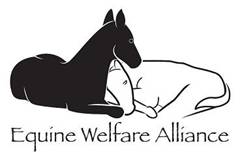
1 comment:
Thoughtful blog thanks for posting.
Post a Comment